Market
‘It’s Whiplash’: After a Record-Setting Run, NFT Artwork Prices Have Plummeted Nearly 70 Percent in Four Weeks
Is this the bubble bursting—or is it merely a course correction?
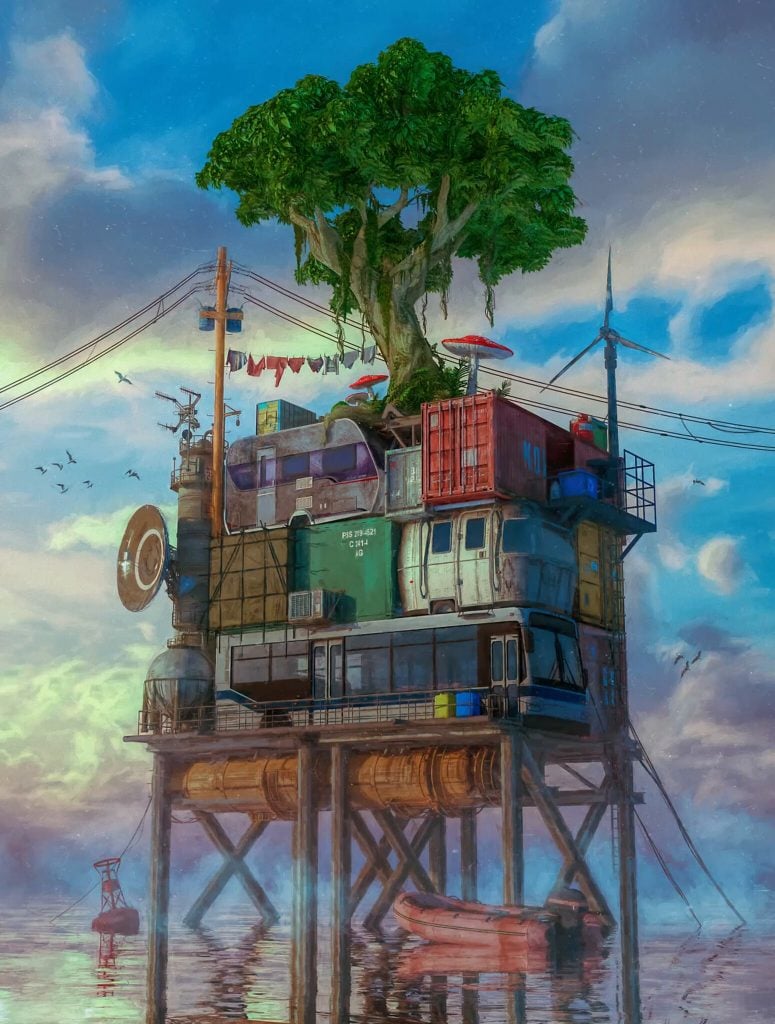
Is this the bubble bursting—or is it merely a course correction?

by
Sarah Cascone

After a string of high-profile sales in February and March, the red-hot market for non-fungible tokens (NFTs) is already showing signs of cooling—but whether this is a bursting bubble or merely a course correction remains to be seen.
On March 11, digital artist Mike “Beeple” Winkelmann shattered all expectations with the $69 million sale of his work Everydays—The First 5000 Days. Suddenly, he was the third-most-expensive living artist, ranked behind only Jeff Koons and David Hockney.
But around a month later, average daily NFT sales have fallen around 70 percent, from a high of $19.3 million in the second week of March to $5.5 million this week, according to Nonfungible.com, which tracks various NFT marketplaces (not including Christie’s).
“It’s whiplash,” Robert Norton, the chief executive and co-founder of NFT art company Verisart, told Artnet News. “The froth and excitement wasn’t sustainable at the levels we saw in February and March.”
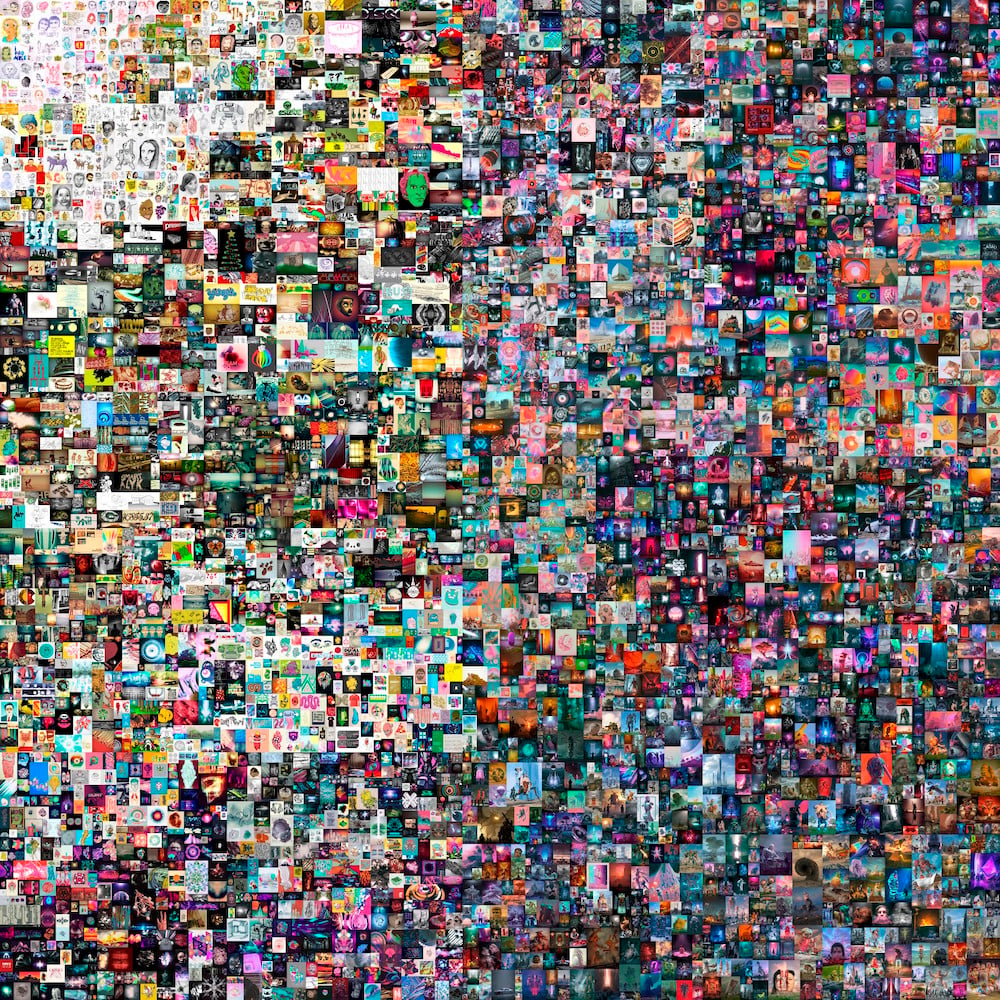
Beeple, Everydays – The First 5000 Days NFT, 21,069 pixels x 21,069 pixels (316,939,910 bytes). Image courtesy the artist and Christie’s.
The volatile market has recovered slightly since the decline was first noted by Bloomberg in late March, when it tracked an 85 percent decline, to $3 million, in average daily NFT sales.
But the art category of NFTs remains on a downward slope, having fallen from $1.7 million in average daily sales a week ago to $547,960 on Tuesday, according to Nonfungible. That’s a 67 percent dip.
Short for non fungible tokens, NFTs represent unique digital objects sold on the blockchain, transforming widely disseminated GIFs or JPGs into valuable collectibles. They can be sold as one-offs, limited editions, or in open editions where anyone can buy one for a limited period of time during the drop.
Artists who have never had a gallery show, let alone a museum retrospective, are suddenly raking in hundreds of thousands of dollars through the sale of their art—and are even collecting a portion of the resales thanks to the terms of the blockchain.
“The positive aspect around this frenzy of speculation is that more people are talking about art than ever before and it’s bringing new people into the art market, and creating new types of art,” Norton said. “My only concern is that conversation is less about the art and more about the transaction.”

Pak, Metarift. Courtesy of the artist.
In some ways, a decline in NFT prices must have been inevitable, with a huge influx of new NFTs being minted by people hoping to capitalize on the boom making daily headlines.
“[There’s an] incredible saturation of items with no real demand/value,” Brendan Ciecko, founder and CEO of Cuseum, told Artnet News. “Everyone/amateurs [are] jumping into ‘gold rush.'”
Revealingly, the number of unique buyers of NFTs peaked along with the market in the second week of March, according to Nonfungible.com, at 4,107. Today, that number has shrunk considerably, to 1,527.
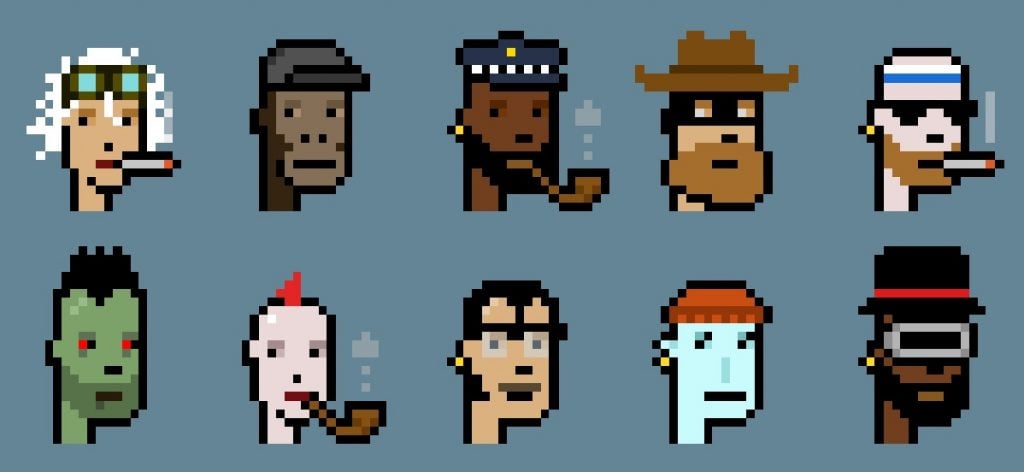
CryptoPunks, a set of 10,000 unique NFTs minted in 2017 by Larva Labs, can sell for over $1 million each. Image courtesy of Larva Labs.
Even for established artists entering the fray, there has been difficulty in matching the big numbers put up by leading NFT artists such as Beeple, the anonymous Pak, and 18-year-old FEWOCiOUS.
Verisart, for instance, is currently releasing a series of NFT works by 10 leading artists, including Petra Cortright, Neil Beloufa, and Rob Pruitt. The top drop to date is a $178,225 work by Shepard Fairey, which pales in comparison to the hundreds of thousands, if not millions, being pulled in by the aforementioned art world outsiders.
But the sales are more or less tracking the artists’ existing market for physical works—and Norton isn’t surprised.
“The people bidding $15 million for Beeple’s work at Christie’s aren’t traditional art collectors. They are people who have made money through cryptocurrency,” he said. “Artists like Beeple and FEWOCiOUS are very well known to their community, because they have had a significant dialogue.”
One apt comparison is the market for prints by the street artist Banksy. “A hundred dollar print is now selling for half a million dollars, yet, artists like [Gerhard] Richter are selling fine art prints for a fraction of that,” Norton said. “You can’t equate the importance of an artist with the value that they may have in a specific type of market.”
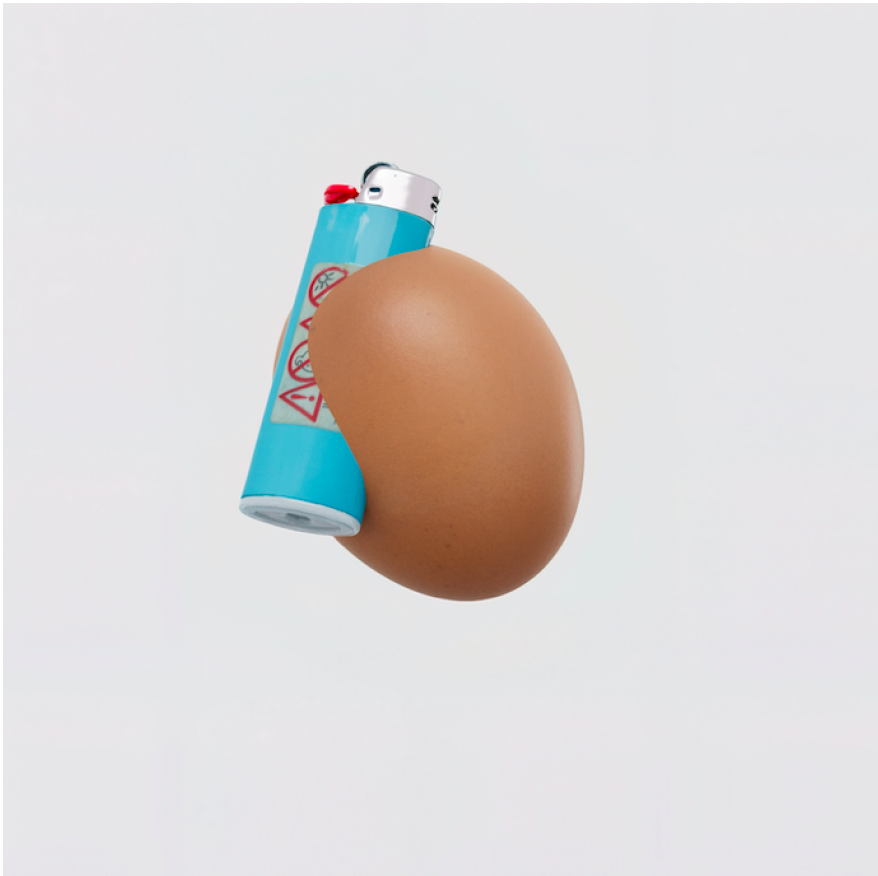
Still from Urs Fischer’s CHAOS #1 Human (2021). Photo: Urs Fischer
What is trickier to explain is the unorthodox bidding patterns from NFT collectors, who eschew the time-honored method of increasing one’s offer in small regimented increments in favor of massive price increases in an auction’s closing minutes. (Beeple’s record-setting work at Christie’s jumped from $15 million to $69 million in the final half-hour.)
Part of the reason NFT collectors are willing to spend more than they have to—besides a penchant for flashy numbers with repeating numerals—may be because they feel there is still something to prove about this nascent market.
After spending a then-record $777,777.77 on a collection of Beeple artworks in January, Tim Kang realized that part of his motivation was to help legitimize NFT art.
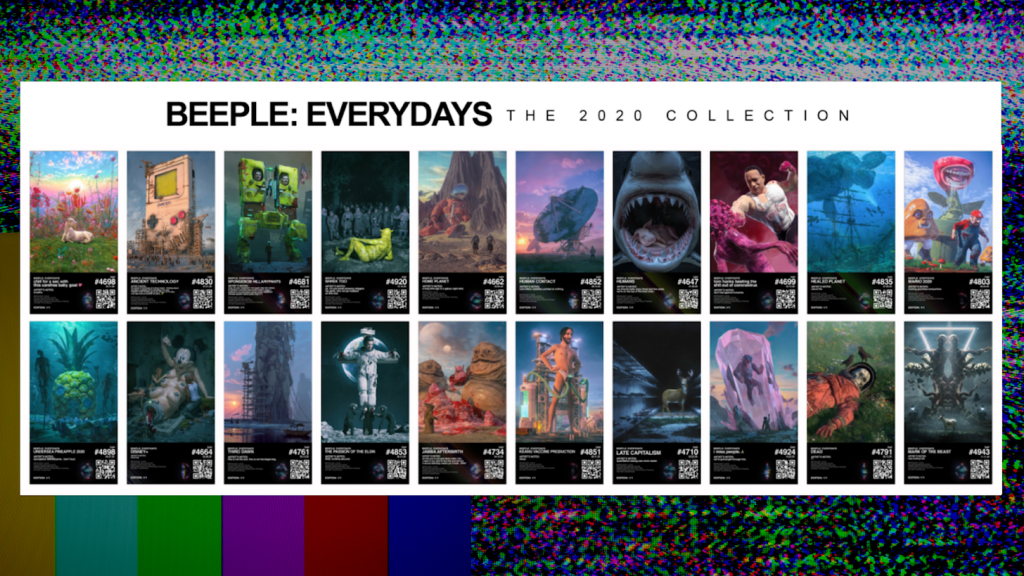
Beeple’s “Beeple Everydays: The 2020 Collection.” Courtesy of Metapurse.
“I wanted to ensure that this is valid, that this is the future,” he told Bloomberg. “I was taking a stand for our future of creative liberation.”
Whether or not that kind of spending is sustainable, some liken the dynamic to the pressure that, say, Andy Warhol collectors face to make sure his work continues to perform at auction in order to maintain the value of their own holdings.
“Notable VCs (who have managers/analysts dedicated to crypto) are pumping incredible amounts of money into companies like Dapper Labs and OpenSea—definitely going for the long-game,” Ciecko said.
And as the medium gains mainstream attention, more and more traditional art world gatekeepers are following Christie’s lead. Sotheby’s and Phillips are both hosting NFT sales this month (with bids on the former’s sale already exceeding $10 million).
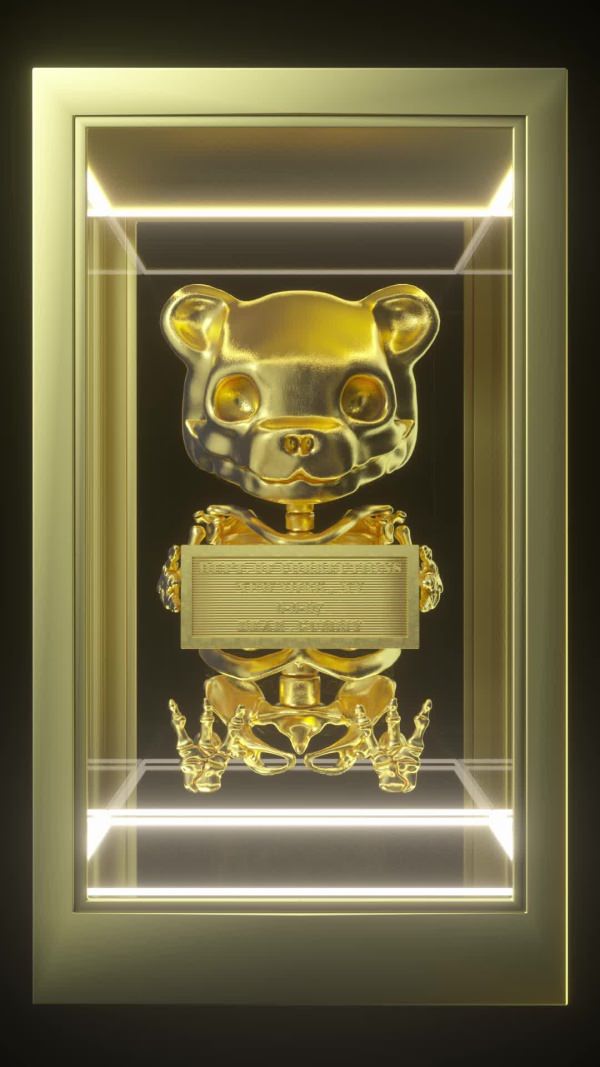
WhIsBe, Not Forgotten, But Gone. With a $1 million sale last month, this is currently tied for the tenth most expensive NFT artwork of all time. Courtesy of WhIsBe.
Despite its widely cited figures showing a major market decline, Nonfungible.com maintains that there has been no NFT slump, only a stabilization after several record sales of rare CryptoPunks. `
Even if average prices plateau at $1,500, rather than $4,000, that “represents an increase of around 10 times the average price of an NFT six months ago ($142 at the start of October 2020),” the site noted. “Let’s not cry out too soon, NFTs still have a bright future ahead of them!”